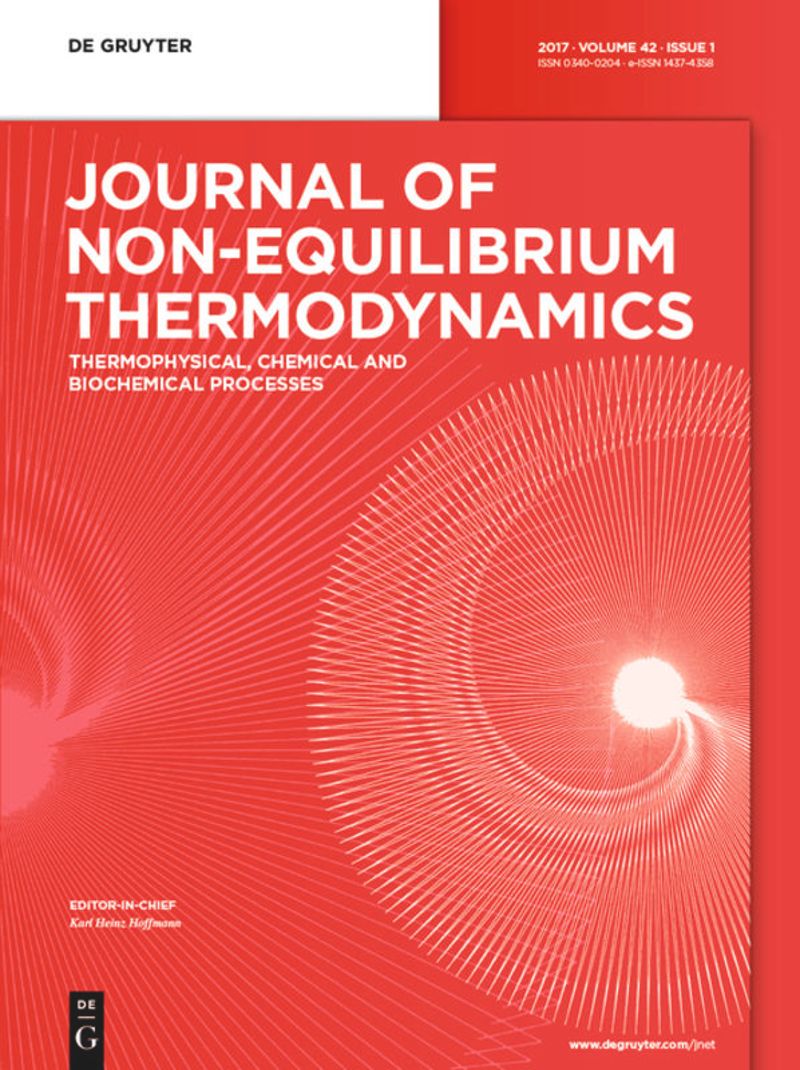Thermal transport in a silicon/diamond micro-flake with quantum dots inserts
IF 4.2
3区 工程技术
Q1 MECHANICS
引用次数: 0
Abstract
Non-equilibrium thermal energy transfer in small scale films pairs, composing of different film materials, is important for designing semiconductor devices or thermoelectric energy generators. The present study examines thermal energy transfer in low size silicon-diamond film pairs with the quantum dots in placed. Equation for Phonon Radiative Transport (EPRT) is used to predict the distribution of phonon intensities via adopting the discrete ordinate method. Thermal energy transport is quantified in the form phonon energies via using integral form of equilibrium phonon intensities. Because of the mismatch of properties between silicon and diamond films, interface conditions are formulated after considering energy balance across both films. Findings reveal that equivalent equilibrium temperature decays gradually in the film for small size quantum dots. As the quantum dot size increases, equivalent equilibrium temperature decays sharply because films edges behave like heat sink reducing equilibrium phonon intensities in the region of film edges. Temperature jump, due to mismatch properties of the films, signifies at the mid-section of the interface and it increases slightly with increasing quantum dot size. The magnitude of heat flux vector remains higher in diamond than silicon film. The effective thermal conductivity predicted is in agreement with the previous data for silicon film.嵌入量子点的硅/金刚石微片的热输运
由不同薄膜材料组成的小尺度薄膜对的非平衡热传递对于设计半导体器件或热电发电机具有重要意义。本研究考察了放置量子点的小尺寸硅-金刚石薄膜对中的热能传递。利用声子辐射输运方程(EPRT),采用离散坐标法预测声子强度的分布。利用平衡声子强度的积分形式,将热能输运量化为声子能量。由于硅膜和金刚石膜之间的性质不匹配,在考虑了两种膜之间的能量平衡后,制定了界面条件。研究结果表明,小尺寸量子点的等效平衡温度在薄膜中逐渐衰减。随着量子点尺寸的增大,等效平衡温度急剧下降,这是因为薄膜边缘的热沉行为降低了薄膜边缘区域的平衡声子强度。由于薄膜的不匹配特性,温度跳变主要发生在界面中部,随着量子点尺寸的增大,温度跳变略有增加。金刚石薄膜的热通量矢量的大小仍然高于硅薄膜。所得的有效导热系数与硅膜的实测数据基本一致。
本文章由计算机程序翻译,如有差异,请以英文原文为准。
求助全文
约1分钟内获得全文
求助全文
来源期刊
CiteScore
9.10
自引率
18.20%
发文量
31
审稿时长
1 months
期刊介绍:
The Journal of Non-Equilibrium Thermodynamics serves as an international publication organ for new ideas, insights and results on non-equilibrium phenomena in science, engineering and related natural systems. The central aim of the journal is to provide a bridge between science and engineering and to promote scientific exchange on a) newly observed non-equilibrium phenomena, b) analytic or numeric modeling for their interpretation, c) vanguard methods to describe non-equilibrium phenomena.
Contributions should – among others – present novel approaches to analyzing, modeling and optimizing processes of engineering relevance such as transport processes of mass, momentum and energy, separation of fluid phases, reproduction of living cells, or energy conversion. The journal is particularly interested in contributions which add to the basic understanding of non-equilibrium phenomena in science and engineering, with systems of interest ranging from the macro- to the nano-level.
The Journal of Non-Equilibrium Thermodynamics has recently expanded its scope to place new emphasis on theoretical and experimental investigations of non-equilibrium phenomena in thermophysical, chemical, biochemical and abstract model systems of engineering relevance. We are therefore pleased to invite submissions which present newly observed non-equilibrium phenomena, analytic or fuzzy models for their interpretation, or new methods for their description.

 求助内容:
求助内容: 应助结果提醒方式:
应助结果提醒方式:


